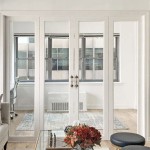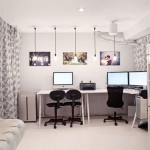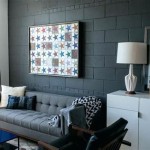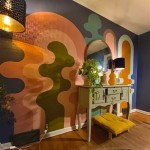What Kind of Education Do You Need to Be an Interior Designer?
Interior design is a multifaceted profession that combines creativity, technical skills, and a deep understanding of space planning, aesthetics, and client needs. Becoming a successful interior designer requires a blend of formal education and practical experience. The specific educational path may vary depending on individual goals and the desired career trajectory. This article explores the different educational options available for aspiring interior designers, highlighting the essential skills and knowledge gained through each path.
Formal Education: The Foundation of Interior Design
Formal education is a cornerstone for aspiring interior designers, providing a strong theoretical foundation and practical skills. Traditional educational paths include:
- Associate's Degree in Interior Design: Typically a two-year program, this degree offers a comprehensive overview of design principles, drawing, color theory, and basic design software. It provides a solid foundation for entry-level positions or further studies.
- Bachelor of Arts (BA) or Bachelor of Fine Arts (BFA) in Interior Design: These four-year degree programs offer in-depth studies in design history, theory, and practice. They encompass advanced design software, professional communication, project management, and ethical considerations. A BA/BFA degree is often required for more advanced positions and licensing.
- Master of Fine Arts (MFA) in Interior Design: For individuals seeking specialized knowledge and leadership roles, an MFA program offers advanced research, design methodologies, and a focus on specific areas like sustainable design or historical preservation. An MFA can be particularly beneficial for those aiming for academic positions or leading design firms.
Formal education provides a structured learning environment with access to expert faculty, industry connections, and real-world projects. It ensures a comprehensive understanding of design principles, technical skills, and professional ethics.
Continuing Education and Certification: Staying Ahead of the Curve
The field of interior design is constantly evolving, with new technologies, materials, and trends emerging regularly. Continuing education plays a vital role in ensuring designers stay competitive and relevant. Professionals can pursue various options, including:
- Continuing Education Courses: Specialized courses offered by design schools, professional organizations, and online platforms allow designers to expand their skills in areas like sustainable design, lighting design, or specific software applications.
- Professional Certifications: Organizations like the National Council for Interior Design Qualification (NCIDQ) offer professional certifications that validate a designer's knowledge and skills. Becoming NCIDQ certified can increase credibility and open doors to more opportunities.
- Professional Development Workshops: Workshops and seminars led by industry experts offer valuable insights into emerging trends, new materials, and innovative design techniques. Networking with other professionals provides valuable connections and insights.
Continuous learning ensures designers remain up-to-date on industry trends, advancements, and best practices. It allows them to adapt to evolving client needs and design challenges.
Practical Experience: Building a Portfolio and Developing Skills
While formal education provides a strong foundation, practical experience is crucial for becoming a successful interior designer. Building a portfolio and developing real-world skills can be achieved through:
- Internships: Internships offer valuable opportunities to work alongside experienced designers, gain hands-on experience, and build a professional network. They provide exposure to various design styles, client interactions, and project management techniques.
- Freelance Projects: Taking on freelance projects for friends, family, or small businesses allows designers to apply their knowledge, build a portfolio, and develop client communication skills. It provides valuable experience in managing budgets, timelines, and client expectations.
- Personal Projects: Taking on personal projects like redesigning a room in their own home or designing a dream space allows designers to experiment with different styles, explore their creative vision, and showcase their work.
Practical experience allows designers to refine their skills, develop a unique design style, and build a portfolio showcasing their abilities. It provides valuable real-world insights into the design process, client interactions, and industry expectations.

How To Become An Interior Decorator With Pictures Wikihow

Saskatchewan Scholarships How To Become An Interior Designer

How To Become An Interior Designer Career Sidekick

How To Become An Interior Designer In 2024 Yorkville University

Interior Design Associate Degree Program Designer Gateway Technical College

How To Become An Interior Designer The Ultimate Guide Studying In Switzerland

6 Skills For Becoming An Interior Designer Success Stories Fidm Edu

Live Home 3d Becoming An Interior Designer

How To Become An Interior Designer 7 Simple Steps 2024

5 Tips On How To Prep For Interior Design School All Art Schools
Related Posts








